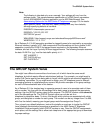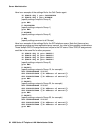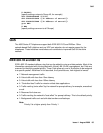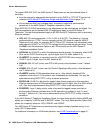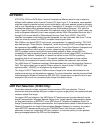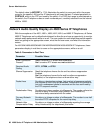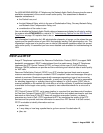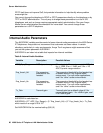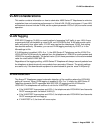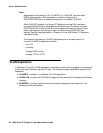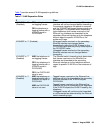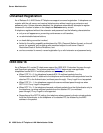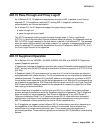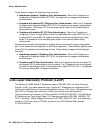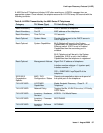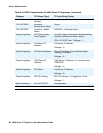
VLAN Considerations
Issue 4 August 2006 91
VLAN Considerations
This section contains information on how to administer 4600 Series IP Telephones to minimize
registration time and maximize performance in a Virtual LAN (VLAN) environment. If your LAN
environment does not include VLANs, set the system parameter L2Q to 2 (off) to ensure correct
operation.
VLAN Tagging
IEEE 802.1Q tagging (VLAN) is a useful method of managing VoIP traffic in your LAN. Avaya
recommends that you establish a voice VLAN, set L2QVLAN to that VLAN and provide voice
traffic with priority over other traffic. If LLDP was used set the telephones’ VLAN, that setting
has absolute authority. Otherwise, you can set VLAN tagging manually, by DHCP, or in the
46xxsettings.txt file.
If VLAN tagging is enabled (L2Q= 0 or 1), the 4600 Series IP Telephones set the VLAN ID to
L2QVLAN, and VLAN priority for packets from the telephone to L2QAUD for audio packets and
L2QSIG for signalling packets. The default value (6) for these parameters is the recommended
value for voice traffic in IEEE 802.1D.
Regardless of the tagging setting, a 4600 Series IP Telephone will always transmit packets from
the telephone at absolute priority over packets from secondary Ethernet. The priority settings
are useful only if the downstream equipment is administered to give the voice VLAN priority.
VLAN Detection
The Avaya IP Telephones support automatic detection of the condition where the L2QVLAN
setting is incorrect. When VLAN tagging is enabled (L2Q= 0 or 1) initially the 4600 Series IP
Telephone transmits DHCP messages with IEEE 802.1Q tagging and the VLAN set to
L2QVLAN. The telephones will continue to do this for VLANTEST seconds.
● If the VLANTEST timer expires and L2Q=1, the telephone sets L2QVLAN=0 and transmits
DHCP messages with the default VLAN (0).
● If the VLANTEST timer expires and L2Q=0, the telephone sets L2QVLAN=0 and transmits
DHCP messages without tagging.
● If VLANTEST is 0, the timer will never expire.



